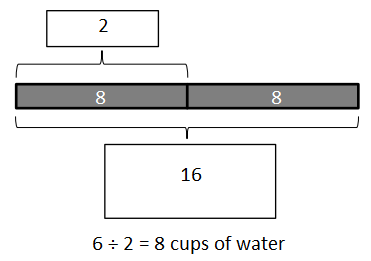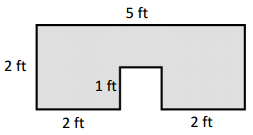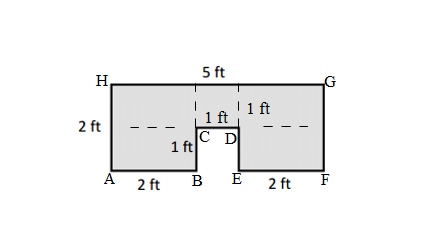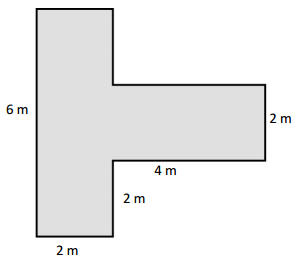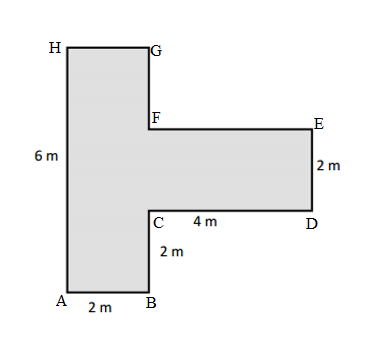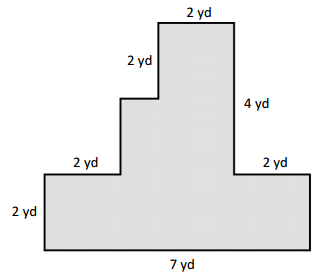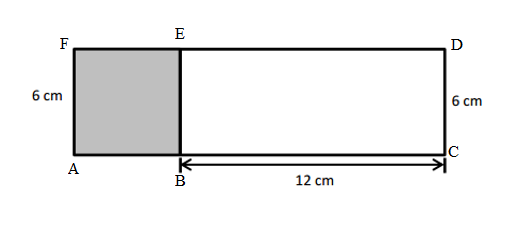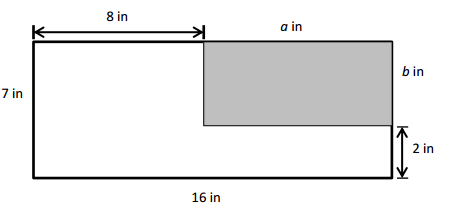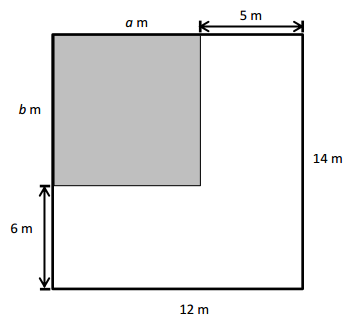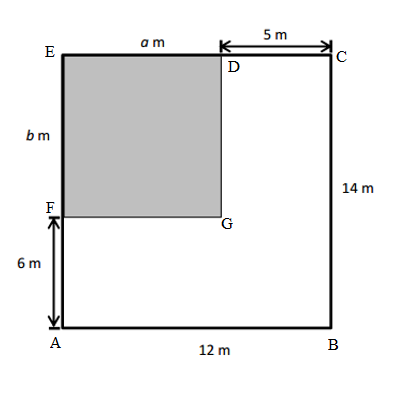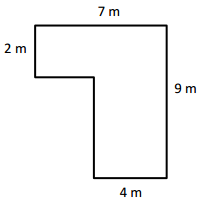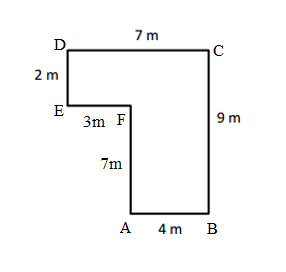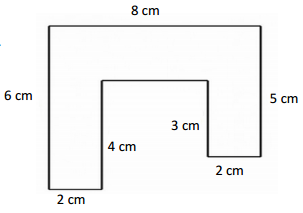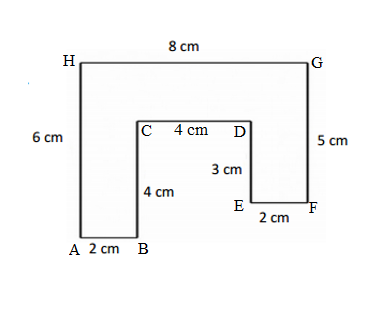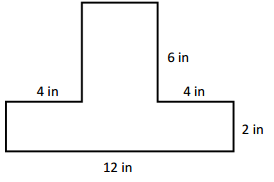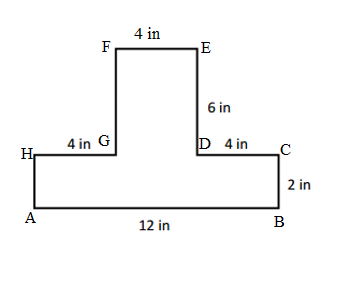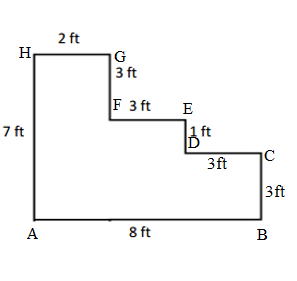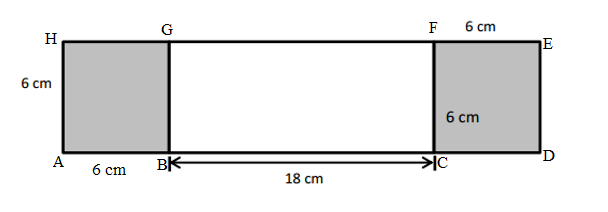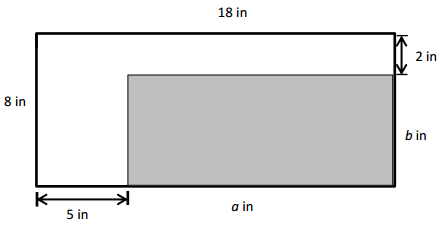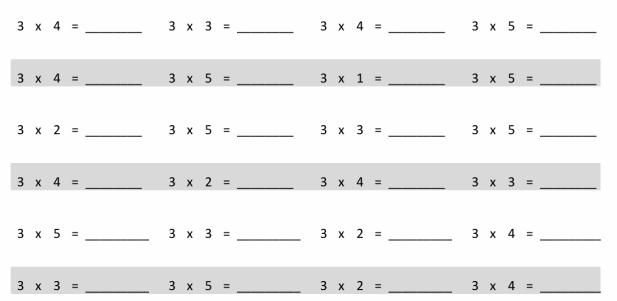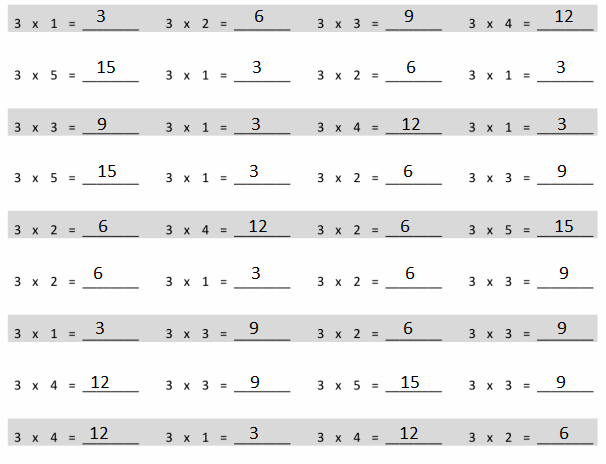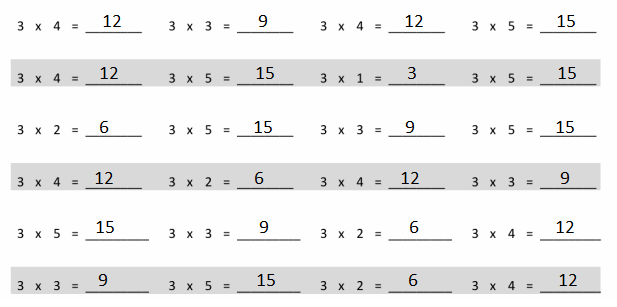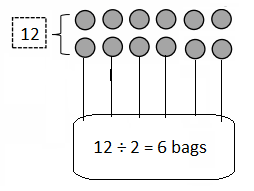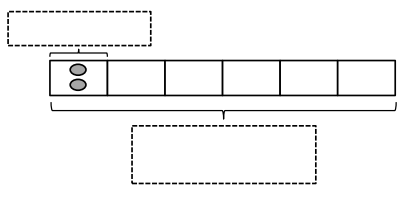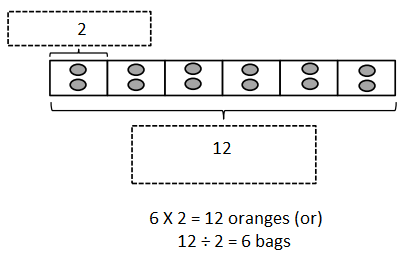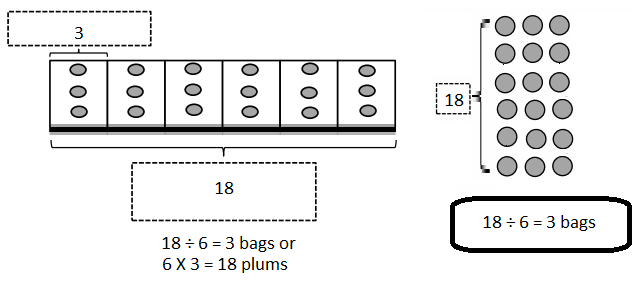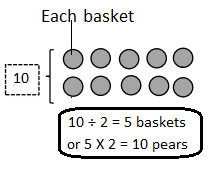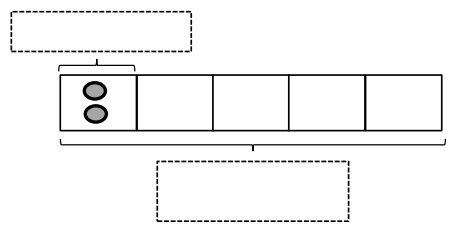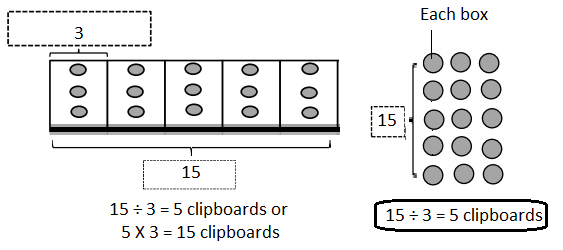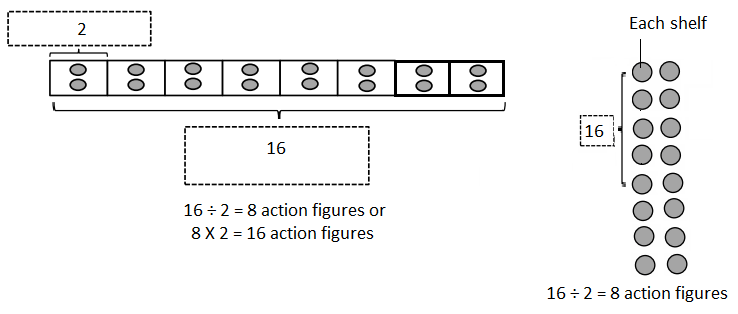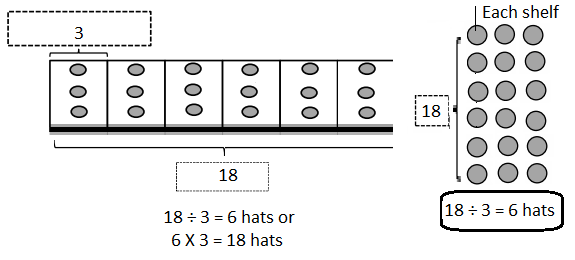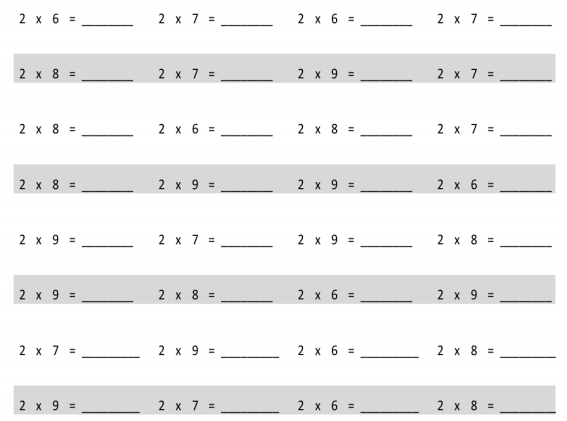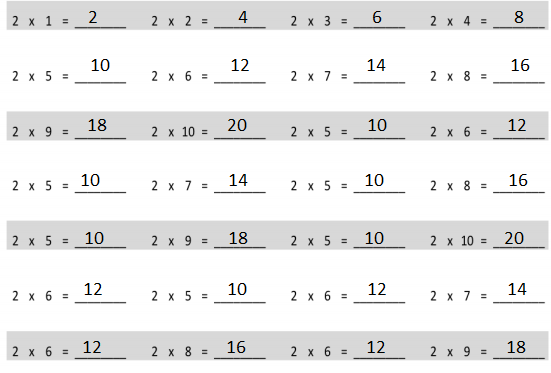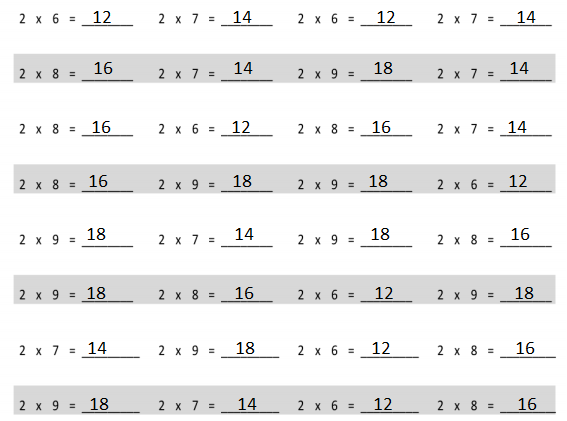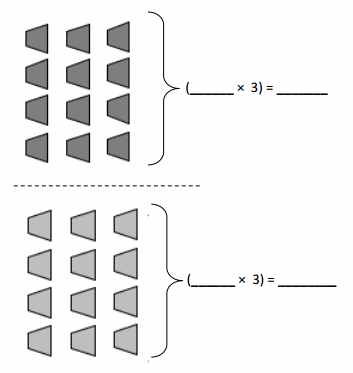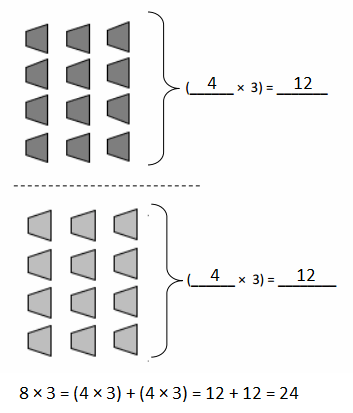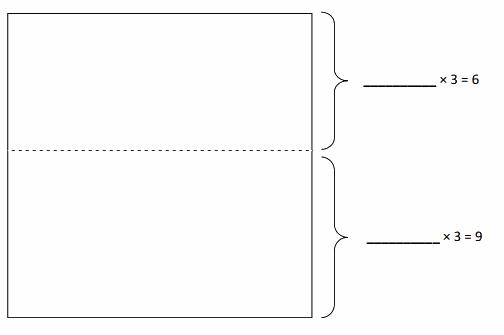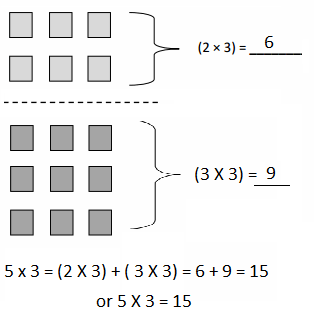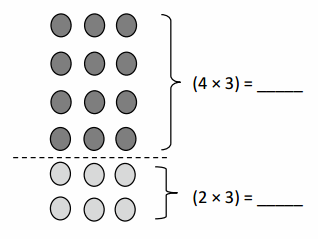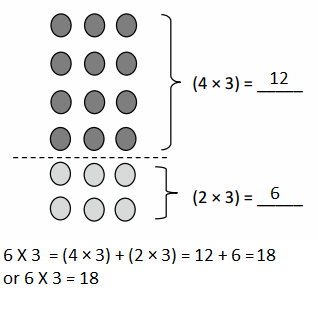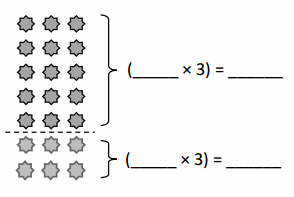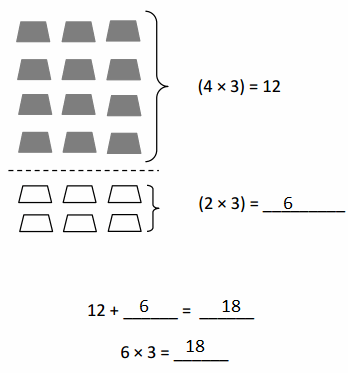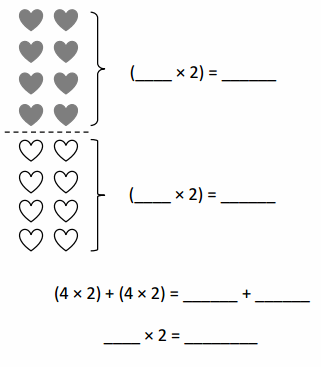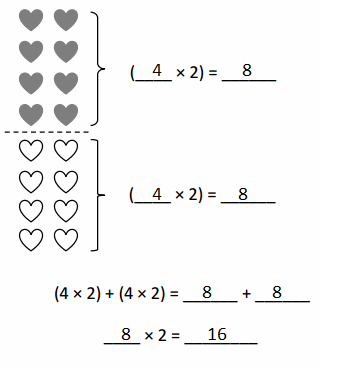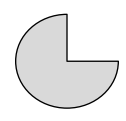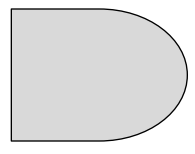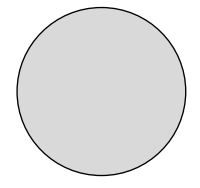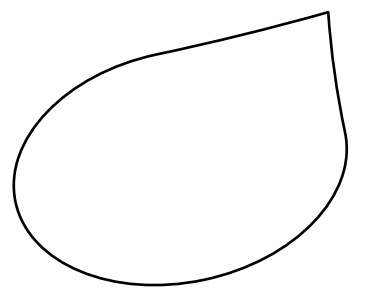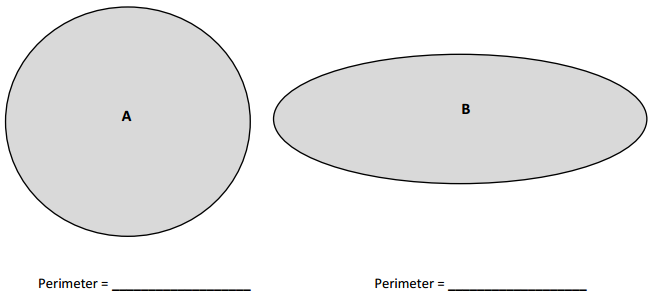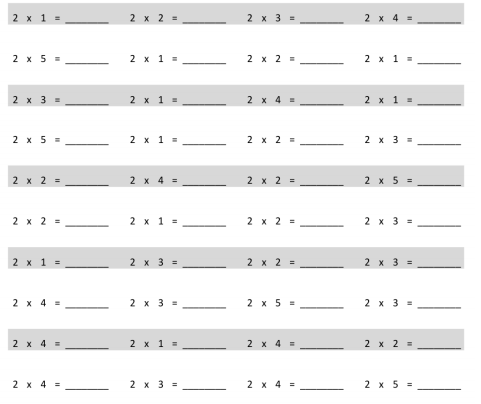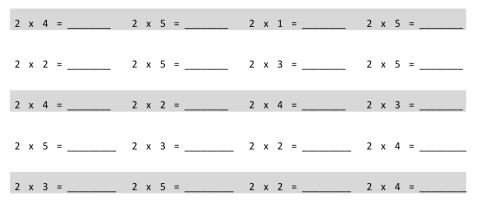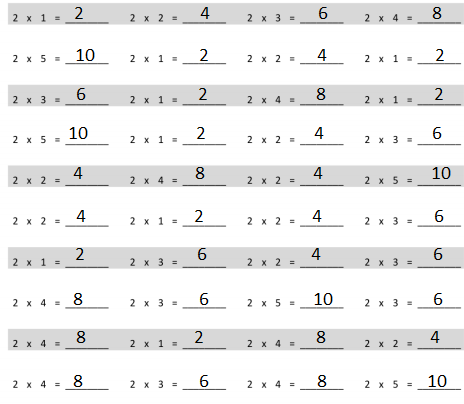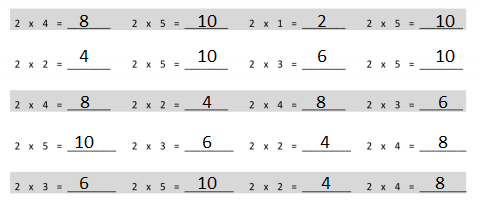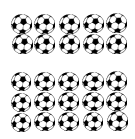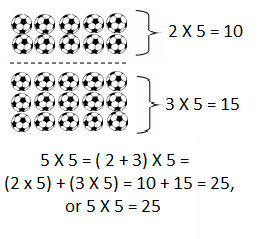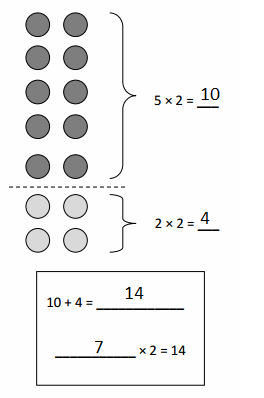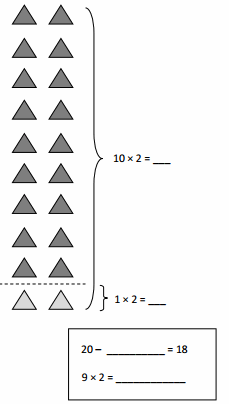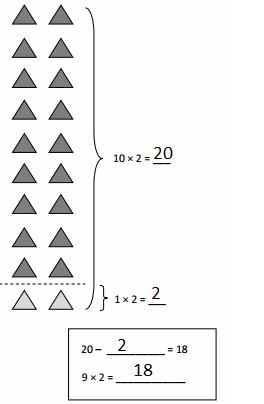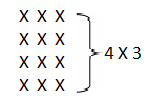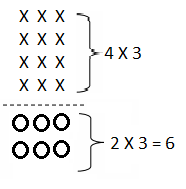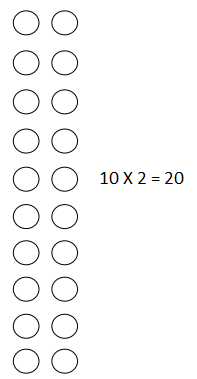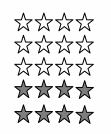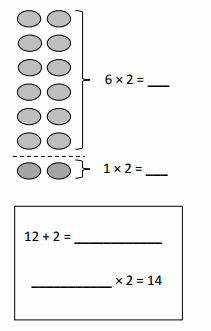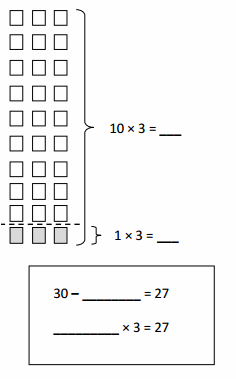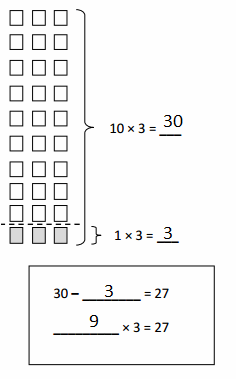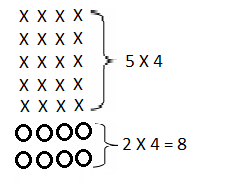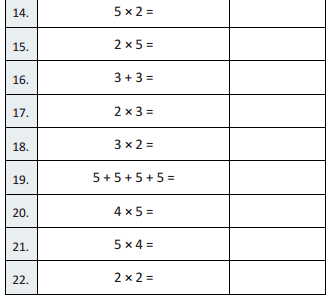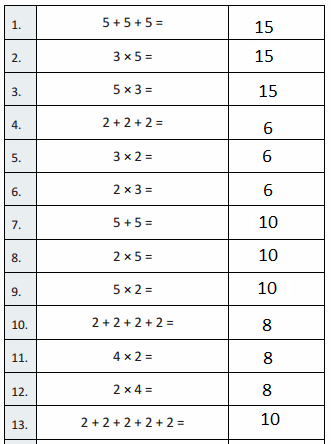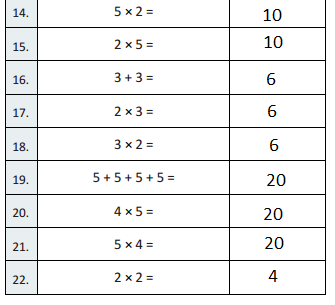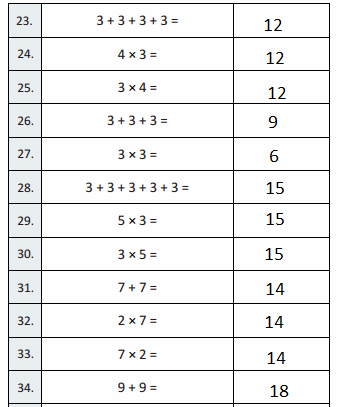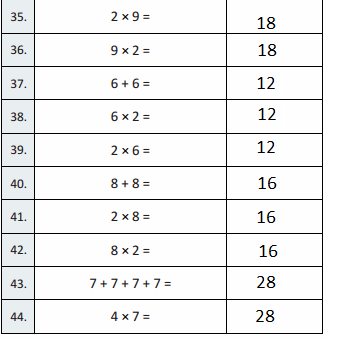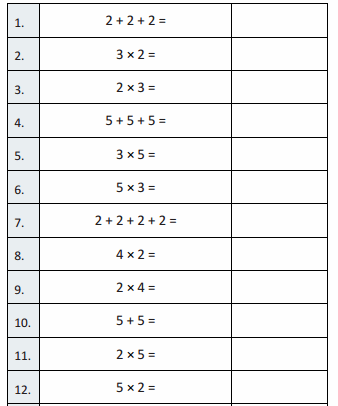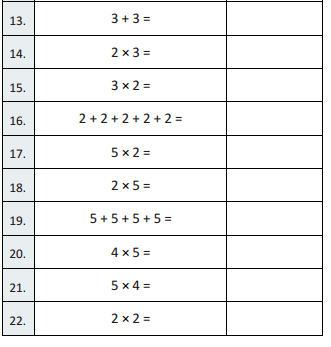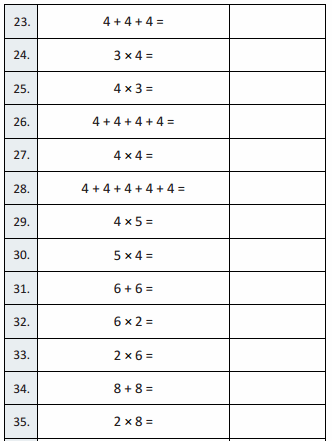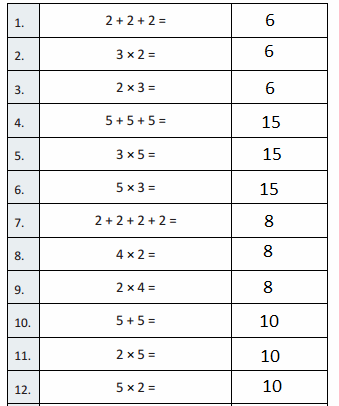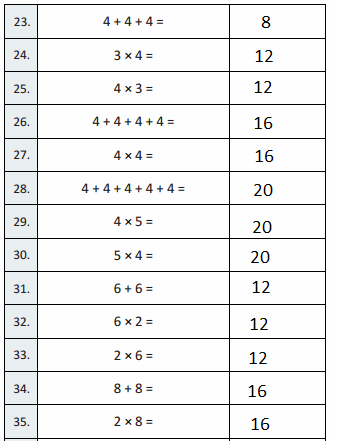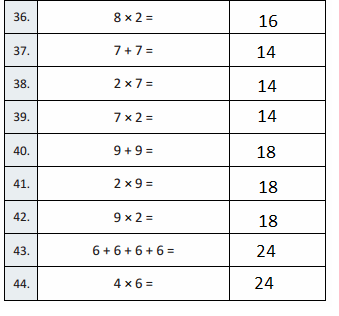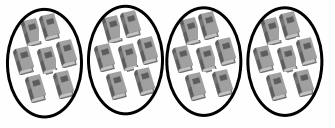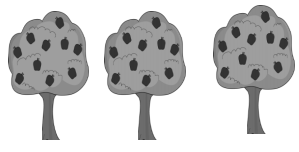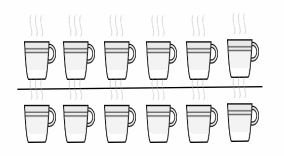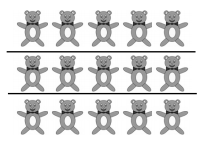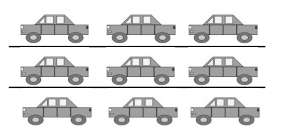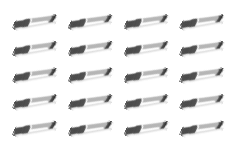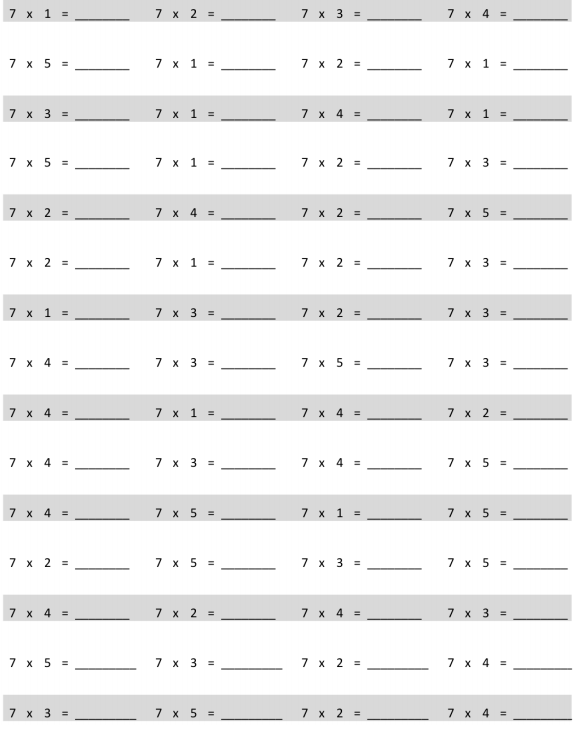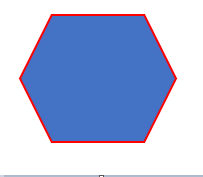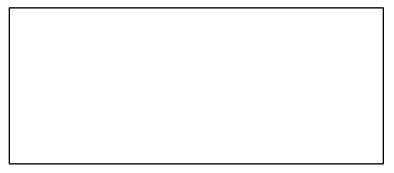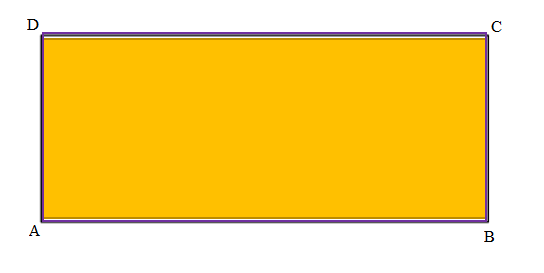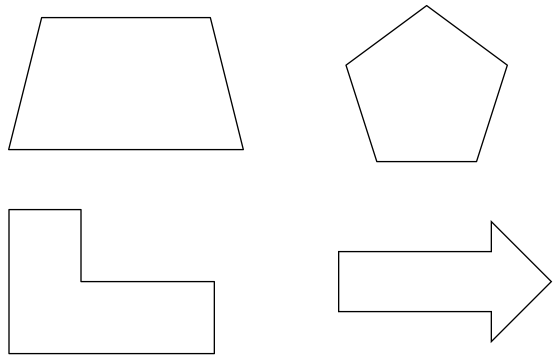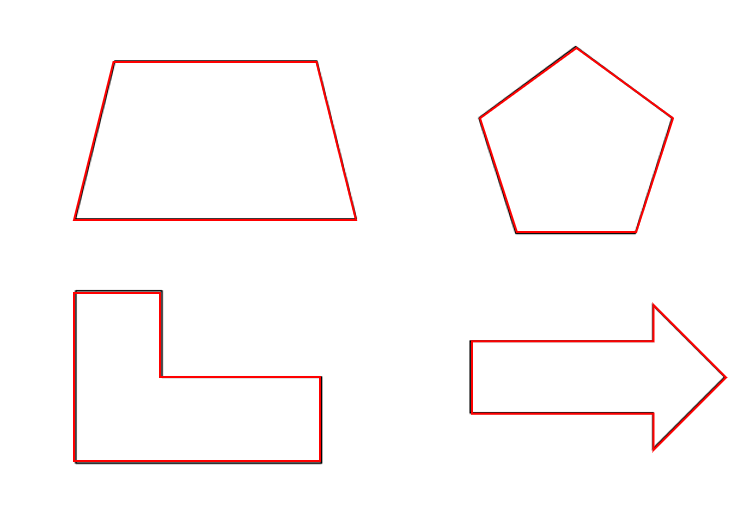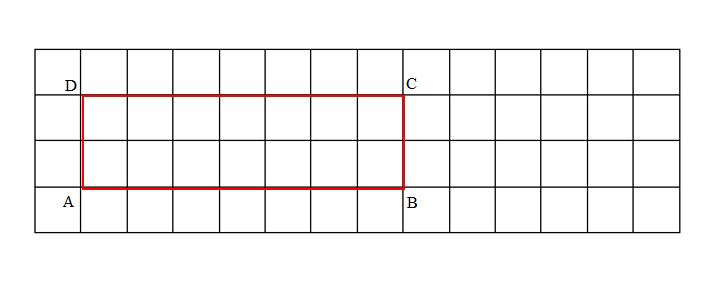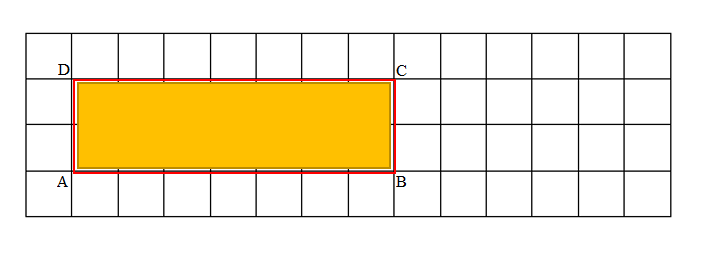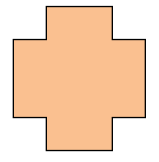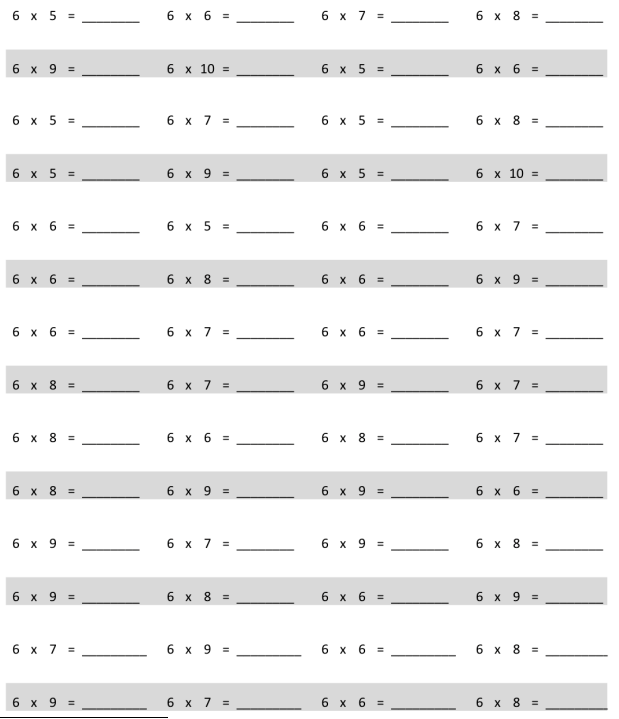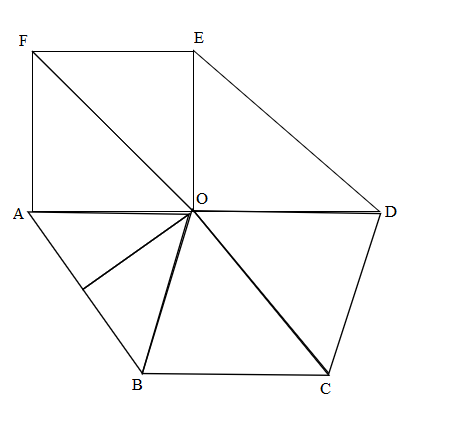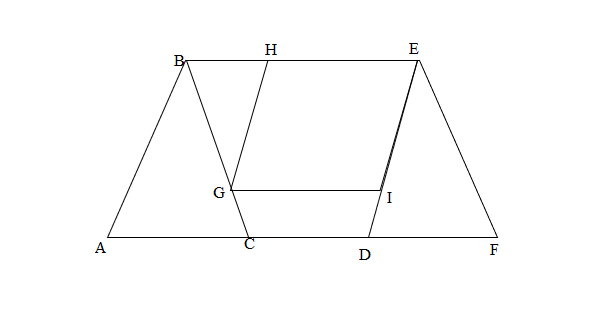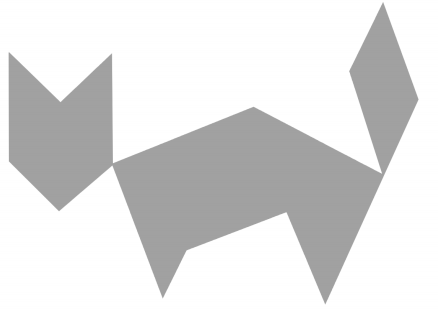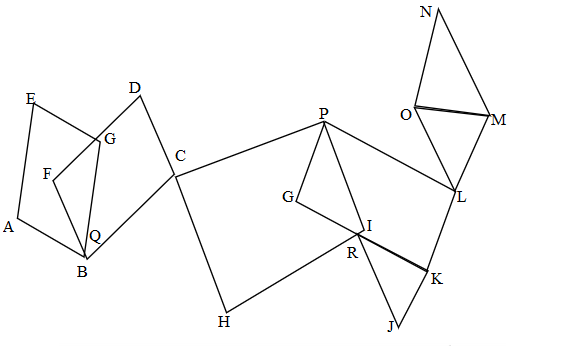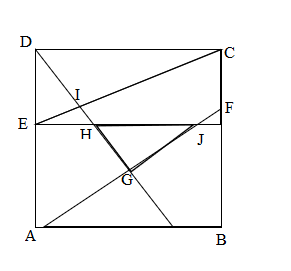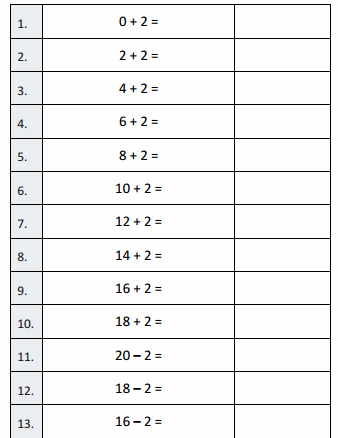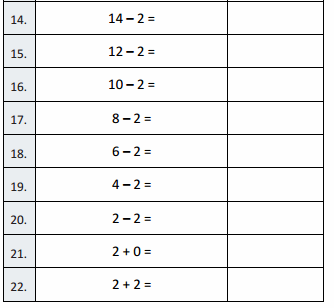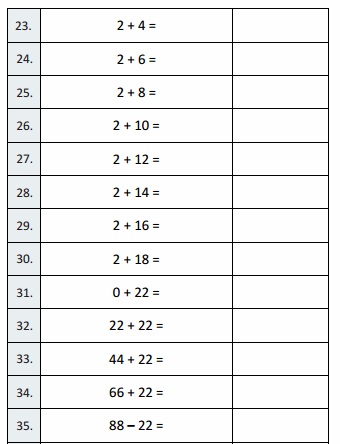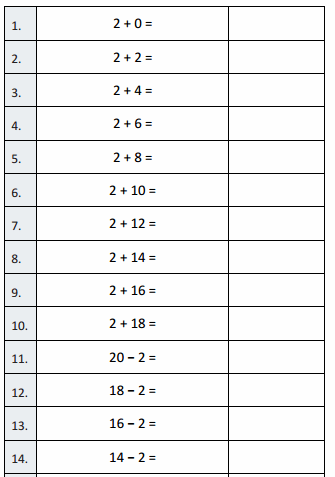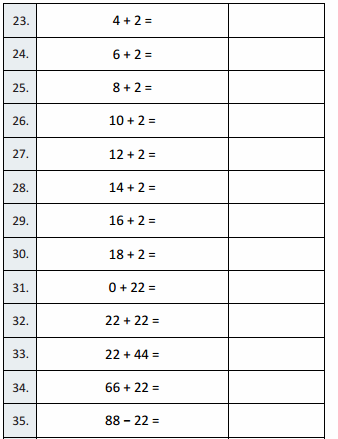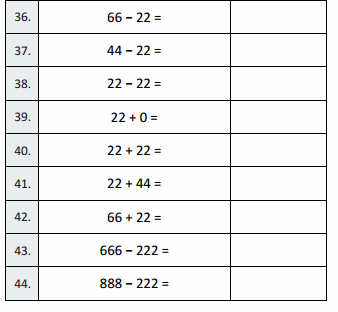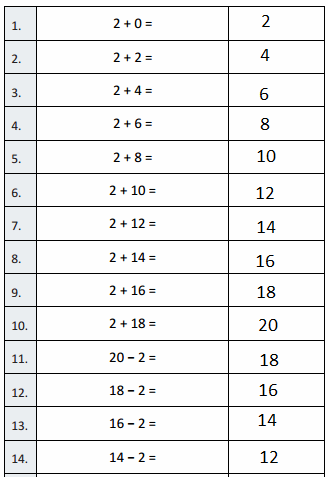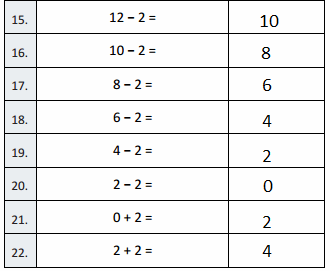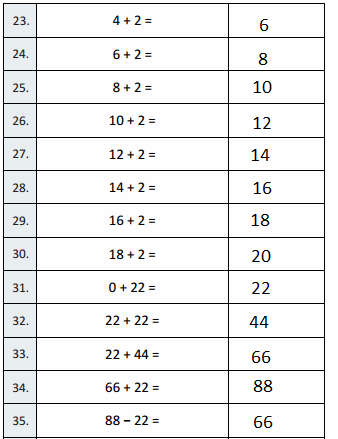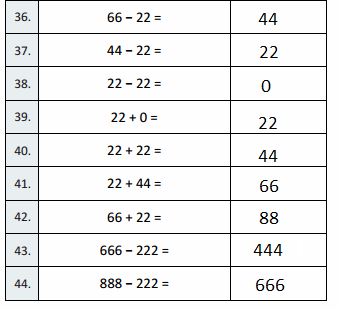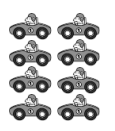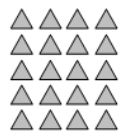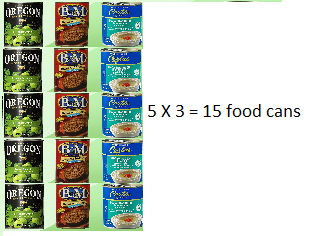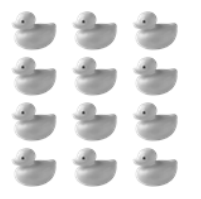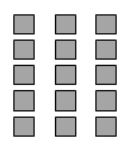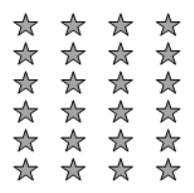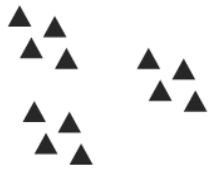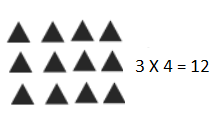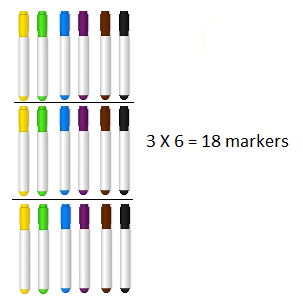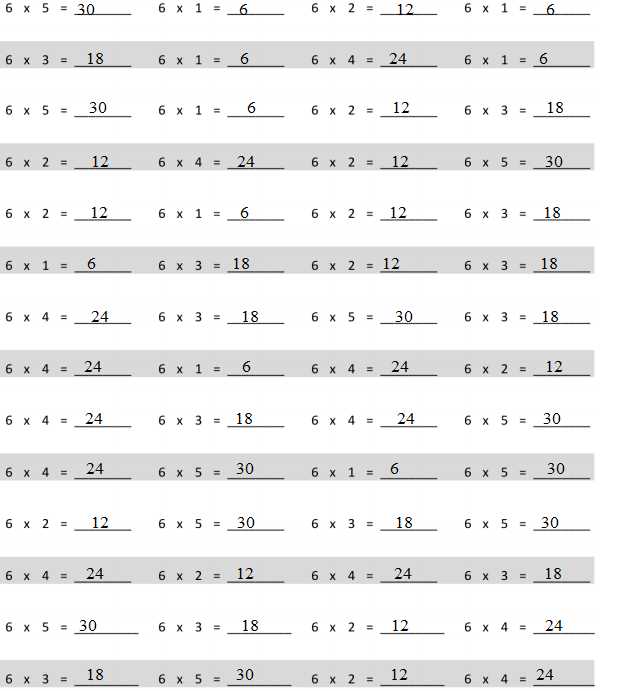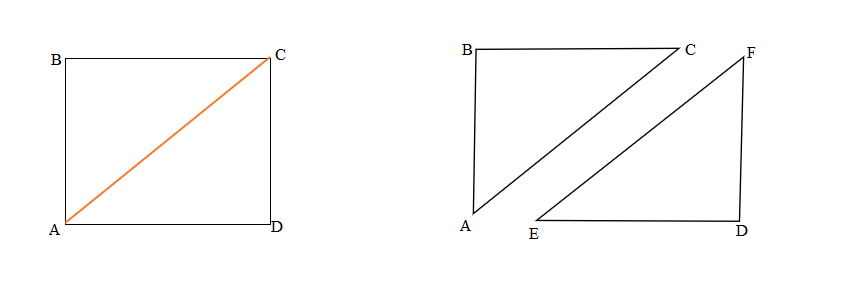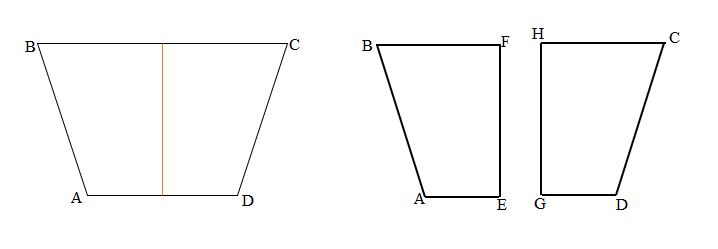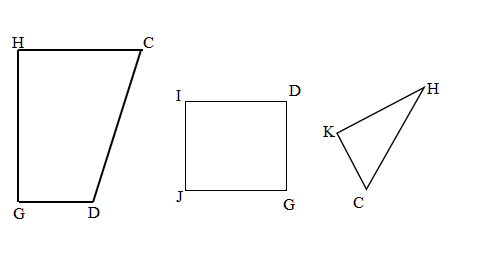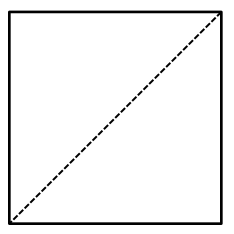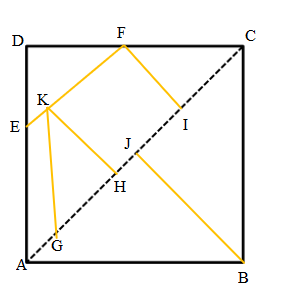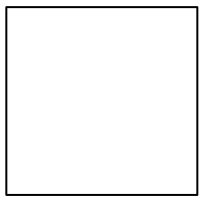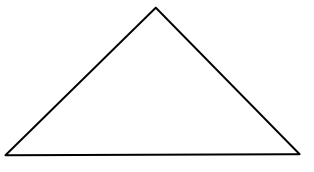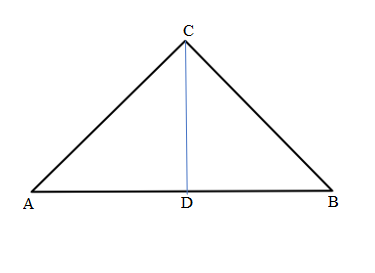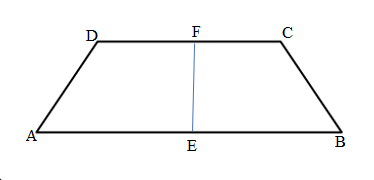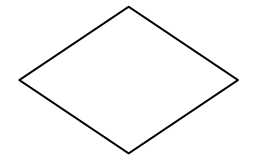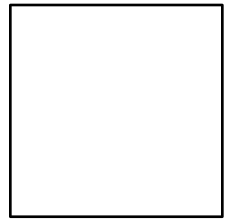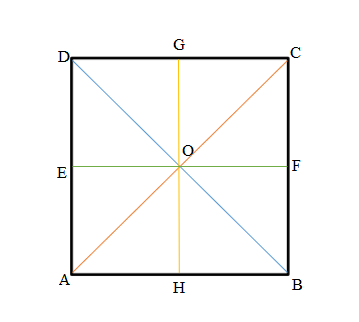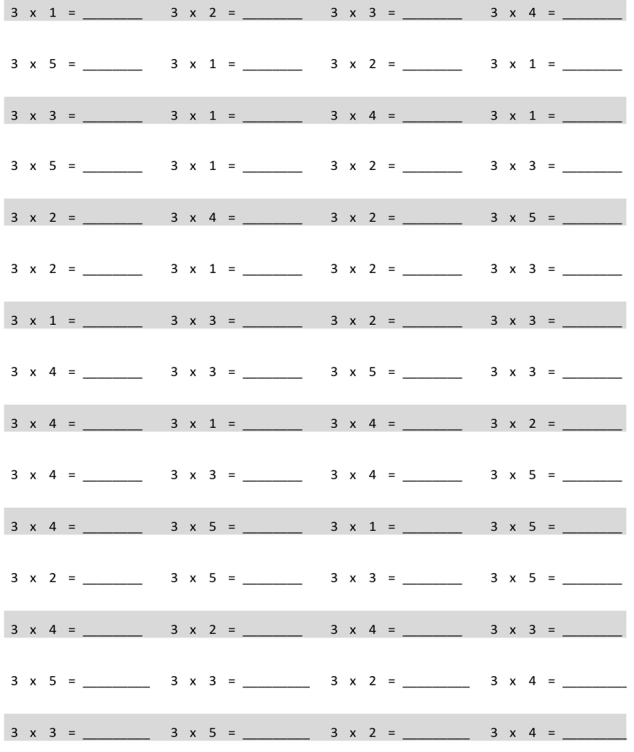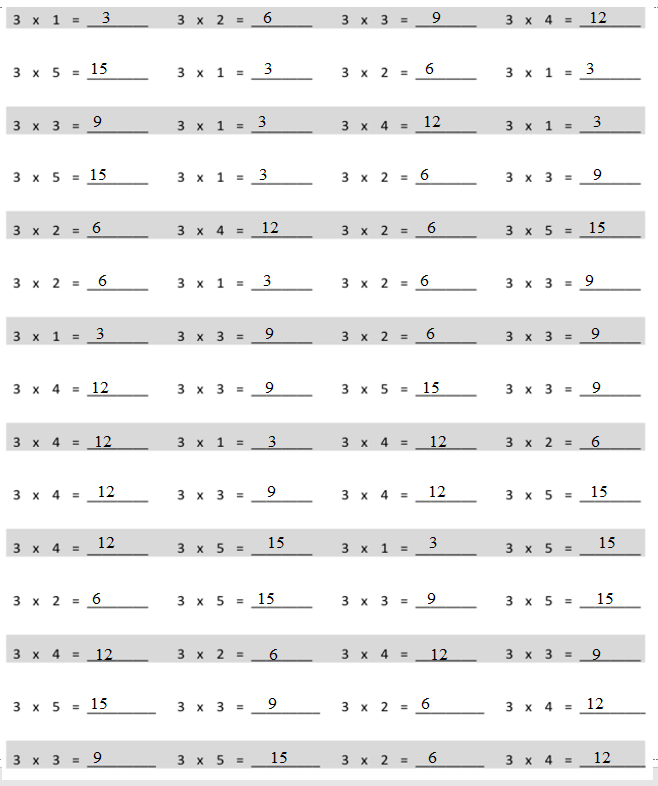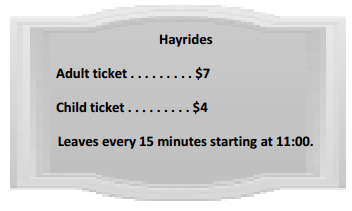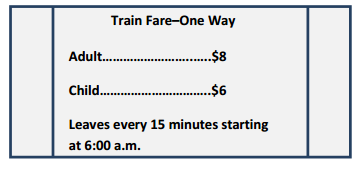Engage NY Eureka Math 3rd Grade Module 1 Lesson 13 Answer Key
Eureka Math Grade 3 Module 1 Answer Key
Eureka Math Grade 3 Module 1 Lesson 13 Sprint Answer Key
A
Multiply or Divide by 2
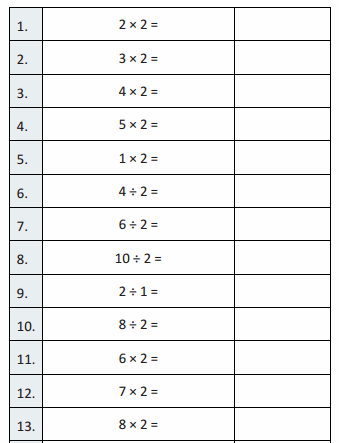

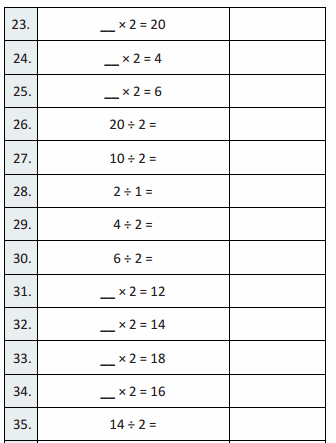



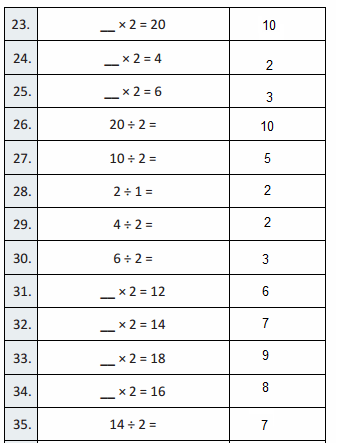
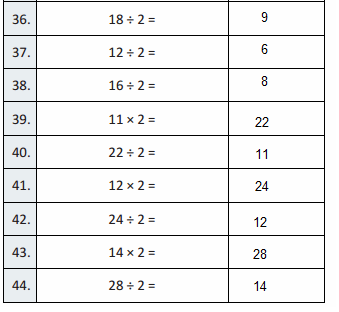
Question 1.
2 × 2 =
2 X 2 = 4,
Explanation:
Given 2 X 2 we multiply 2 with 2,
we get 4 as 2 X 2 = 4.
Question 2.
3 × 2 =
3 X 2 = 6,
Explanation:
Given 3 X 2 we multiply 3 with 2,
we get 6 as 3 X 2 = 6.
Question 3.
4 × 2 =
4 X 2 = 8,
Explanation:
Given 4 X 2 we multiply 4 with 2,
we get 8 as 4 X 2 = 8.
Question 4.
5 × 2 =
5 X 2 = 10,
Explanation:
Given 5 X 2 we multiply 5 with 2,
we get 10 as 5 X 2 = 10.
Question 5.
1 × 2 =
1 X 2 = 2,
Explanation:
Given 1 X 2 we multiply 1 with 2,
we get 2 as 1 X 2 = 2.
Question 6.
4 ÷ 2 =
4 ÷ 2 = 2,
Explanation:
Given 4 ÷ 2 we divide 4 by 2,
we get 2 as 4 ÷ 2 = 2.
Question 7.
6 ÷ 2 =
6 ÷ 2 = 3,
Explanation:
Given 6 ÷ 2 we divide 6 by 2,
we get 3 as 6 ÷ 2 = 3.
Question 8.
10 ÷ 2 =
10 ÷ 2 = 5,
Explanation:
Given 10 ÷ 2 we divide 10 by 2,
we get 5 as 10 ÷ 2 = 5.
Question 9.
2 ÷ 1 =
2 ÷ 1 = 2,
Explanation:
Given 2 ÷ 1 we divide 2 by 1,
we get 2 as 2 ÷ 1 = 2.
Question 10.
8 ÷ 2 =
8 ÷ 2 = 4,
Explanation:
Given 8 ÷ 2 we divide 8 by 2,
we get 4 as 8 ÷ 2 = 4.
Question 11.
6 × 2 =
6 X 2 = 12,
Explanation:
Given 6 X 2 we multiply 6 with 2,
we get 12 as 6 X 2 = 12.
Question 12.
7 × 2 =
7 X 2 = 14,
Explanation:
Given 7 X 2 we multiply 7 with 2,
we get 14 as 7 X 2 = 14.
Question 13.
8 × 2 =
8 X 2 = 16,
Explanation:
Given 8 X 2 we multiply 8 with 2,
we get 16 as 8 X 2 = 16.
Question 14.
9 × 2 =
9 X 2 = 18,
Explanation:
Given 9 X 2 we multiply 9 with 2,
we get 18 as 9 X 2 = 18.
Question 15.
10 × 2 =
10 X 2 = 20,
Explanation:
Given 10 X 2 we multiply 10 with 2,
we get 20 as 10 X 2 = 20.
Question 16.
16 ÷ 2 =
16 ÷ 2 = 8,
Explanation:
Given 16 ÷ 2 we divide 16 by 2,
we get 8 as 16 ÷ 2 = 8.
Question 17.
14 ÷ 2 =
14 ÷ 2 = 7,
Explanation:
Given 14 ÷ 2 we divide 14 by 2,
we get 7 as 14 ÷ 2 = 7.
Question 18.
18 ÷ 2 =
18 ÷ 2 = 9,
Explanation:
Given 18 ÷ 2 we divide 18 by 2,
we get 9 as 18 ÷ 2 = 9.
Question 19.
12 ÷ 2 =
12 ÷ 2 = 6,
Explanation:
Given 12 ÷ 2 we divide 12 by 2,
we get 6 as 12 ÷ 2 = 6.
Question 20.
20 ÷ 2 =
20 ÷ 2 = 10,
Explanation:
Given 20 ÷ 2 we divide 20 by 2,
we get 10 as 20 ÷ 2 = 10.
Question 21.
__ × 2 = 10
5 X 2 = 10,
Explanation:
Given __ X 2 = 10, Let us take missing number
as x, So x X 2 = 10, means x = 10 ÷ 2 = 5,
therefore 5 X 2 = 10.
Question 22.
__ × 2 = 12
6 X 2 = 12,
Explanation:
Given __ X 2 = 12, Let us take missing number
as x, So x X 2 = 12, means x = 12 ÷ 2 = 6,
therefore 6 X 2 = 12.
Question 23.
__ × 2 = 20
10 X 2 = 20,
Explanation:
Given __ X 2 = 20, Let us take missing number
as x, So x X 2 = 20, means x = 20 ÷ 2 = 10,
therefore 10 X 2 = 20.
Question 24.
__ × 2 = 4
2 X 2 = 4,
Explanation:
Given __ X 2 = 4, Let us take missing number
as x, So x X 2 = 4, means x = 4 ÷ 2 = 2,
therefore 2 X 2 = 4.
Question 25.
__ × 2 = 6
3 X 2 = 6,
Explanation:
Given __ X 2 = 6, Let us take missing number
as x, So x X 2 = 6, means x = 6 ÷ 2 = 3,
therefore 3 X 2 = 6.
Question 26.
20 ÷ 2 =
20 ÷ 2 = 10,
Explanation:
Given 20 ÷ 2 we divide 20 by 2,
we get 10 as 20 ÷ 2 = 10.
Question 27.
10 ÷ 2 =
10 ÷ 2 = 5,
Explanation:
Given 10 ÷ 2 we divide 10 by 2,
we get 5 as 10 ÷ 2 = 5.
Question 28.
2 ÷ 1 =
2 ÷ 1 = 2,
Explanation:
Given 2 ÷ 1 we divide 2 by 1,
we get 2 as 2 ÷ 1 = 2.
Question 29.
4 ÷ 2 =
4 ÷ 2 = 2,
Explanation:
Given 4 ÷ 2 we divide 4 by 2,
we get 2 as 4 ÷ 2 = 2.
Question 30.
6 ÷ 2 =
6 ÷ 2 = 3,
Explanation:
Given 6 ÷ 2 we divide 6 by 2,
we get 3 as 6 ÷ 2 = 3.
Question 31.
__ × 2 = 12
6 X 2 = 12,
Explanation:
Given __ X 2 = 12, Let us take missing number
as x, So x X 2 = 12, means x = 12 ÷ 2 = 6,
therefore 6 X 2 = 12.
Question 32.
__ × 2 = 14
7 X 2 = 14,
Explanation:
Given __ X 2 = 14, Let us take missing number
as x, So x X 2 = 14, means x = 14 ÷ 2 = 7,
therefore 7 X 2 = 14.
Question 33.
__ × 2 = 18
9 X 2 = 18,
Explanation:
Given __ X 2 = 18, Let us take missing number
as x, So x X 2 = 18, means x = 18 ÷ 2 = 9,
therefore 9 X 2 = 18.
Question 34.
__ × 2 = 16
8 X 2 = 16,
Explanation:
Given __ X 2 = 16, Let us take missing number
as x, So x X 2 = 16, means x = 16 ÷ 2 = 8,
therefore 8 X 2 = 16.
Question 35.
14 ÷ 2 =
14 ÷ 2 = 7,
Explanation:
Given 14 ÷ 2 we divide 14 by 2,
we get 7 as 14 ÷ 2 = 7.
Question 36.
18 ÷ 2 =
18 ÷ 2 = 9,
Explanation:
Given 18 ÷ 2 we divide 18 by 2,
we get 9 as 18 ÷ 2 = 9.
Question 37.
12 ÷ 2 =
12 ÷ 2 = 6,
Explanation:
Given 12 ÷ 2 we divide 12 by 2,
we get 6 as 12 ÷ 2 = 6.
Question 38.
16 ÷ 2 =
16 ÷ 2 = 8,
Explanation:
Given 16 ÷ 2 we divide 16 by 2,
we get 8 as 16 ÷ 2 = 8.
Question 39.
11 × 2 =
11 X 2 = 22,
Explanation:
Given 11 X 2 we multiply 11 with 2,
we get 22 as 11 X 2 = 22.
Question 40.
22 ÷ 2 =
22 ÷ 2 = 11,
Explanation:
Given 22 ÷ 2 we divide 22 by 2,
we get 11 as 22 ÷ 2 = 11.
Question 41.
12 × 2 =
12 X 2 = 24,
Explanation:
Given 12 X 2 we multiply 12 with 2,
we get 24 as 12 X 2 = 24.
Question 42.
24 ÷ 2 =
24 ÷ 2 = 12,
Explanation:
Given 24 ÷ 2 we divide 24 by 2,
we get 12 as 24 ÷ 2 = 12.
Question 43.
14 × 2 =
14 X 2 = 28,
Explanation:
Given 14 X 2 we multiply 14 with 2,
we get 28 as 14 X 2 = 28.
Question 44.
28 ÷ 2 =
28 ÷ 2 = 14,
Explanation:
Given 28 ÷ 2 we divide 28 by 2,
we get 14 as 28 ÷ 2 = 14.
B
Multiply or Divide by 2
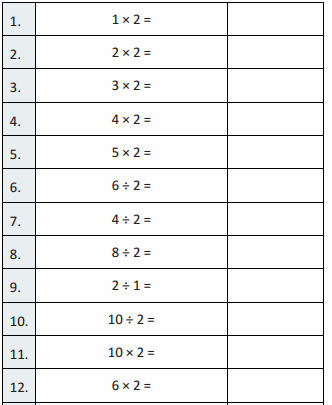

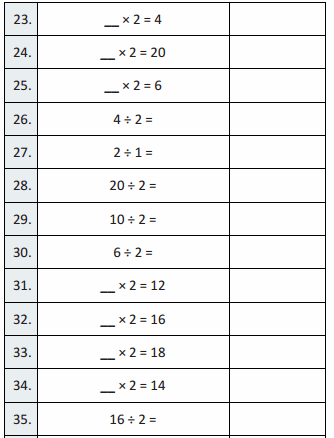
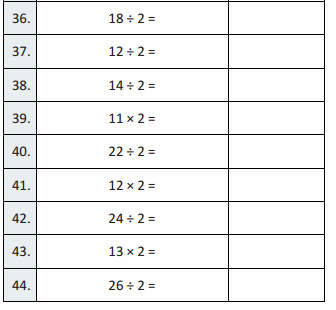
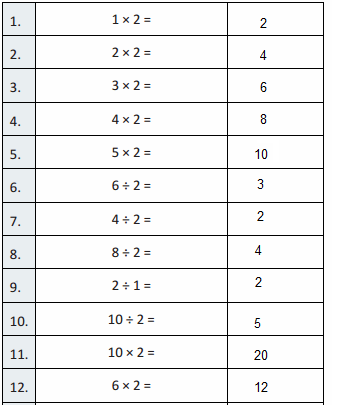
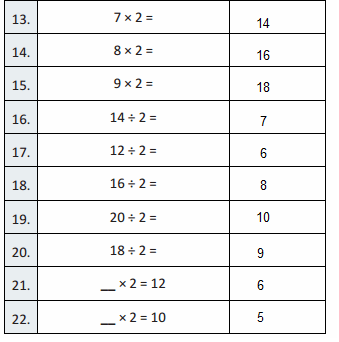
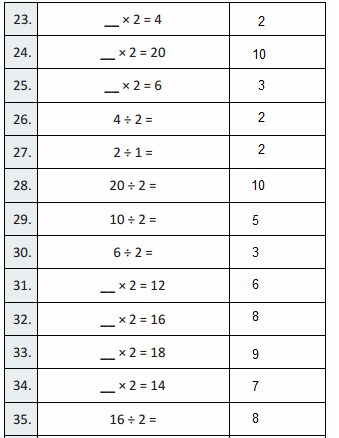
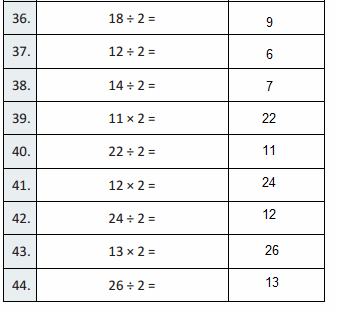
Question 1.
1 × 2 =
1 X 2 = 2,
Explanation:
Given 1 X 2 we multiply 1 with 2,
we get 2 as 1 X 2 = 2.
Question 2.
2 × 2 =
2 X 2 = 4,
Explanation:
Given 2 X 2 we multiply 2 with 2,
we get 4 as 2 X 2 = 4.
Question 3.
3 × 2 =
3 X 2 = 6,
Explanation:
Given 3 X 2 we multiply 3 with 2,
we get 6 as 3 X 2 = 6.
Question 4.
4 × 2 =
4 X 2 = 8,
Explanation:
Given 4 X 2 we multiply 4 with 2,
we get 8 as 4 X 2 = 8.
Question 5.
5 × 2 =
5 X 2 = 10,
Explanation:
Given 5 X 2 we multiply 5 with 2,
we get 10 as 5 X 2 = 10.
Question 6.
6 ÷ 2 =
6 ÷ 2 = 3,
Explanation:
Given 6 ÷ 2 we divide 6 by 2,
we get 3 as 6 ÷ 2 = 3.
Question 7.
4 ÷ 2 =
4 ÷ 2 = 2,
Explanation:
Given 4 ÷ 2 we divide 4 by 2,
we get 2 as 4 ÷ 2 = 2.
Question 8.
8 ÷ 2 =
8 ÷ 2 = 4,
Explanation:
Given 8 ÷ 2 we divide 8 by 2,
we get 4 as 8 ÷ 2 = 4.
Question 9.
2 ÷ 1 =
2 ÷ 1 = 2,
Explanation:
Given 2 ÷ 1 we divide 2 by 1,
we get 2 as 2 ÷ 1 = 2.
Question 10.
10 ÷ 2 =
10 ÷ 2 = 5,
Explanation:
Given 10 ÷ 2 we divide 10 by 2,
we get 5 as 10 ÷ 2 = 5.
Question 11.
10 × 2 =
10 X 2 = 20,
Explanation:
Given 10 X 2 we multiply 10 with 2,
we get 20 as 10 X 2 = 20.
Question 12.
6 × 2 =
6 X 2 = 12,
Explanation:
Given 6 X 2 we multiply 6 with 2,
we get 12 as 6 X 2 = 12.
Question 13.
7 × 2 =
7 X 2 = 14,
Explanation:
Given 7 X 2 we multiply 7 with 2,
we get 14 as 7 X 2 = 14.
Question 14.
8 × 2 =
8 X 2 = 16,
Explanation:
Given 8 X 2 we multiply 8 with 2,
we get 16 as 8 X 2 = 16.
Question 15.
9 × 2 =
9 X 2 = 18,
Explanation:
Given 9 X 2 we multiply 9 with 2,
we get 18 as 9 X 2 = 18.
Question 16.
14 ÷ 2 =
14 ÷ 2 = 7,
Explanation:
Given 14 ÷ 2 we divide 14 by 2,
we get 7 as 14 ÷ 2 = 7.
Question 17.
12 ÷ 2 =
12 ÷ 2 = 6,
Explanation:
Given 12 ÷ 2 we divide 12 by 2,
we get 6 as 12 ÷ 2 = 6.
Question 18.
16 ÷ 2 =
16 ÷ 2 = 8,
Explanation:
Given 16 ÷ 2 we divide 16 by 2,
we get 8 as 16 ÷ 2 = 8.
Question 19.
20 ÷ 2 =
20 ÷ 2 = 10,
Explanation:
Given 20 ÷ 2 we divide 20 by 2,
we get 10 as 20 ÷ 2 = 10.
Question 20.
18 ÷ 2 =
18 ÷ 2 = 9,
Explanation:
Given 18 ÷ 2 we divide 18 by 2,
we get 9 as 18 ÷ 2 = 9.
Question 21.
__ × 2 = 12
6 X 2 = 12,
Explanation:
Given __ X 2 = 12, Let us take missing number
as x, So x X 2 = 12, means x = 12 ÷ 2 = 6,
therefore 6 X 2 = 12.
Question 22.
__ × 2 = 10
5 X 2 = 10,
Explanation:
Given __ X 2 = 10, Let us take missing number
as x, So x X 2 = 10, means x = 10 ÷ 2 = 5,
therefore 5 X 2 = 10.
Question 23.
__ × 2 = 4
2 X 2 = 4,
Explanation:
Given __ X 2 = 4, Let us take missing number
as x, So x X 2 = 4, means x = 4 ÷ 2 = 2,
therefore 2 X 2 = 4.
Question 24.
__ × 2 = 20
10 X 2 = 20,
Explanation:
Given __ X 2 = 20, Let us take missing number
as x, So x X 2 = 20, means x = 20 ÷ 2 = 10,
therefore 10 X 2 = 20.
Question 25.
__ × 2 = 6
3 X 2 = 6,
Explanation:
Given __ X 2 = 6, Let us take missing number
as x, So x X 2 = 6, means x = 6 ÷ 2 = 3,
therefore 3 X 2 = 6.
Question 26.
4 ÷ 2 =
4 ÷ 2 = 2,
Explanation:
Given 4 ÷ 2 we divide 4 by 2,
we get 2 as 4 ÷ 2 = 2.
Question 27.
2 ÷ 1 =
2 ÷ 1 = 2,
Explanation:
Given 2 ÷ 1 we divide 2 by 1,
we get 2 as 2 ÷ 1 = 2.
Question 28.
20 ÷ 2 =
20 ÷ 2 = 10,
Explanation:
Given 20 ÷ 2 we divide 20 by 2,
we get 10 as 20 ÷ 2 = 10.
Question 29.
10 ÷ 2 =
10 ÷ 2 = 5,
Explanation:
Given 10 ÷ 2 we divide 10 by 2,
we get 5 as 10 ÷ 2 = 5.
Question 30.
6 ÷ 2 =
6 ÷ 2 = 3,
Explanation:
Given 6 ÷ 2 we divide 6 by 2,
we get 3 as 6 ÷ 2 = 3.
Question 31.
__ × 2 = 12
6 X 2 = 12,
Explanation:
Given __ X 2 = 12, Let us take missing number
as x, So x X 2 = 12, means x = 12 ÷ 2 = 6,
therefore 6 X 2 = 12.
Question 32.
__ × 2 = 16
8 X 2 = 16,
Explanation:
Given __ X 2 = 16, Let us take missing number
as x, So x X 2 = 16, means x = 16 ÷ 2 = 8,
therefore 8 X 2 = 16.
Question 33.
__ × 2 = 18
9 X 2 = 18,
Explanation:
Given __ X 2 = 18, Let us take missing number
as x, So x X 2 = 18, means x = 18 ÷ 2 = 9,
therefore 9 X 2 = 18.
Question 34.
__ × 2 = 14
7 X 2 = 14,
Explanation:
Given __ X 2 = 14, Let us take missing number
as x, So x X 2 = 14, means x = 14 ÷ 2 = 7,
therefore 7 X 2 = 14.
Question 35.
16 ÷ 2 =
16 ÷ 2 = 8,
Explanation:
Given 16 ÷ 2 we divide 16 by 2,
we get 8 as 16 ÷ 2 = 8.
Question 36.
18 ÷ 2 =
18 ÷ 2 = 9,
Explanation:
Given 18 ÷ 2 we divide 18 by 2,
we get 9 as 18 ÷ 2 = 9.
Question 37.
12 ÷ 2 =
12 ÷ 2 = 6,
Explanation:
Given 12 ÷ 2 we divide 12 by 2,
we get 6 as 12 ÷ 2 = 6.
Question 38.
14 ÷ 2 =
14 ÷ 2 = 7,
Explanation:
Given 14 ÷ 2 we divide 14 by 2,
we get 7 as 14 ÷ 2 = 7.
Question 39.
11 × 2 =
11 X 2 = 22,
Explanation:
Given 11 X 2 we multiply 11 with 2,
we get 22 as 11 X 2 = 22.
Question 40.
22 ÷ 2 =
22 ÷ 2 = 11,
Explanation:
Given 22 ÷ 2 we divide 22 by 2,
we get 11 as 22 ÷ 2 = 11.
Question 41.
12 × 2 =
12 X 2 = 24,
Explanation:
Given 12 X 2 we multiply 12 with 2,
we get 24 as 12 X 2 = 24.
Question 42.
24 ÷ 2 =
24 ÷ 2 = 12,
Explanation:
Given 24 ÷ 2 we divide 24 by 2,
we get 12 as 24 ÷ 2 = 12.
Question 43.
13 × 2 =
13 X 2 = 26,
Explanation:
Given 13 X 2 we multiply 13 with 2,
we get 23 as 13 X 2 = 26.
Question 44.
26 ÷ 2 =
26 ÷ 2 = 13,
Explanation:
Given 26 ÷ 2 we divide 26 by 2,
we get 26 as 26 ÷ 2 = 13.
Eureka Math Grade 3 Module 1 Lesson 13 Problem Set Answer Key
Question 1.
Fill in the blanks to make true number sentences.
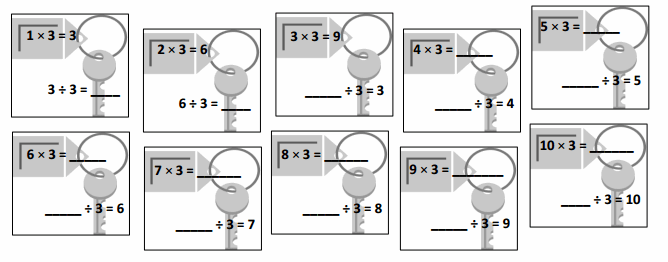
 Explanation:
Explanation:
Filled the blanks to make true number sentences as
1 X 3 = 3, 3 ÷ 3 = 1,
2 X 3 = 6, 6 ÷ 3 = 2,
3 X 3 = 9, 9 ÷ 3 = 3,
4 X 3 = 12, 12 ÷ 3 = 4,
5 X 3 = 15, 15 ÷ 3 = 5,
6 X 3 = 18, 18 ÷ 3 = 6,
7 X 3 = 21, 21 ÷ 3 = 7,
8 X 3 = 24, 24 ÷ 3 = 8,
9 X 3 = 27, 27 ÷ 3 = 9,
10 x 3 = 30, 30 ÷ 3 = 10.
Question 2.
Mr. Lawton picks tomatoes from his garden.
He divides the tomatoes into bags of 3.
a. Circle to show how many bags he packs.
Then, skip-count to show the total number of tomatoes.


Circled the bags as 4,
The total number of tomatoes are 12,
Explanation:
Given Mr. Lawton picks tomatoes from his garden.
He divides the tomatoes into bags of 3.
a. Circled and showed number of bags he packs
as 12 ÷ 3 = 4 bags,
Then, skipped-count and showed the total number of
tomatoes are 4 X 3 = 12.
b. Draw and label a tape diagram to represent the problem.
____12____ ÷ 3 = ___4 bags__________
Mr. Lawton packs ___4____ bags of tomatoes.
Mr. Lawton packs 4 bags of tomatoes,
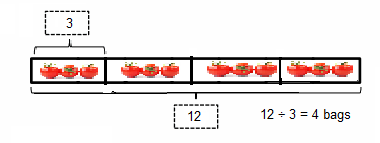
Explanation:
Drawn and labeled a tape diagram to represent
the problem as shown above 12 ÷ 3 = 4 bags.
Question 3.
Camille buys a sheet of stamps that measures 15 centimeters long.
Each stamp is 3 centimeters long.
How many stamps does Camille buy?
Draw and label a tape diagram to solve.
Camille buys ____5_____ stamps.
Camille buy’s 5 stamps,

Explanation:
Given Camille buys a sheet of stamps that measures
15 centimeters long and each stamp is 3 centimeters long.
So number of stamps Camille buy’s is 15 ÷ 3 = 5 stamps,
Drawn and labeled a tape diagram to solve as shown above.
Question 4.
Thirty third-graders go on a field trip. They are equally
divided into 3 vans. How many students are in each van?
In each van there are 11 students,
Explanation:
Given thirty third-graders go on a field trip and they are equally
divided into 3 vans. So number of students in each van are
33 ÷ 3 = 11, Therefore in each van there are 11 students.
Question 5.
Some friends spend $24 altogether on frozen yogurt.
Each person pays $3. How many people buy frozen yogurt?
8 people buy’s frozen yogurt,
Explanation:
Given some friends spend $24 altogether on frozen yogurt
and each person pays $3, So number of people buy’s frozen
yogurt is $24 ÷ $3 = 8, Therefore 8 people buy’s frozen yogurt.
Eureka Math Grade 3 Module 1 Lesson 13 Exit Ticket Answer Key
Question 1.
Andrea has 21 apple slices. She uses 3 apple slices to
decorate 1 pie. How many pies does Andrea make?
Draw and label a tape diagram to solve.
Andrea makes 7 pies,
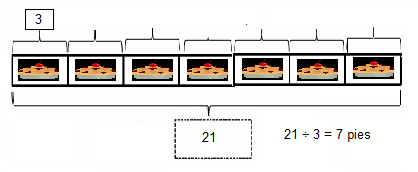
Explanation:
Given Andrea has 21 apple slices and she uses 3 apple slices to
decorate 1 pie. So number of pies Andrea makes are 21 ÷ 3 = 7,
Drawn and labeled a tape diagram to solve as shown above.
Question 2.
There are 24 soccer players on the field. They form 3 equal teams.
How many players are on each team?
Number of players in each team are 8,
Explanation:
Given there are 24 soccer players on the field and
they form 3 equal teams, So number of players in
each team are 24 ÷ 3 = 8 players.
Eureka Math Grade 3 Module 1 Lesson 13 Homework Answer Key
Question 1.
Fill in the blanks to make true number sentences.


Explanation:
Filled in the blanks to make true number sentences as
2 X 3 = 6, 6 ÷ 3 = 2, 1 x 3 = 3, 3 ÷ 3 =1,
7 X 3 = 21, 21 ÷ 3 = 7 and 9 X 3 = 27, 27 ÷ 3 = 9.
Question 2.
Ms. Gillette’s pet fish are shown below.
She keeps 3 fish in each tank.
a. Circle to show how many fish tanks she has.
Then, skip-count to find the total number of fish.

Circled the fish tanks as 5,
The total number of fishes are 15,

Explanation:
Given Ms. Gillette’s pet fishes, She keeps 3 fish in each tank,
Circled to show number of fish tanks she has.
Then, skipped-count to find the total number of fishes as
5 X 3 = 15.
b. Draw and label a tape diagram to represent the problem.
_____15______ ÷ 3 = ____5______
Ms. Gillette has ___5____ fish tanks.
Ms. Gillette has 5 fish tanks.

Explanation:
Drawn and labeled a tape diagram to represent
the problem as shown above 15 ÷ 3 = 5 fish tanks.
Question 3.
Juan buys 18 meters of wire. He cuts the wire into
pieces that are each 3 meters long. How many pieces
of wire does he cut?
Juan cuts 6 pieces of wire.
Explanation:
Given Juan buys 18 meters of wire and he cuts the wire into
pieces that are each 3 meters long So number of pieces
of wire he cuts is 18 ÷ 3 = 6 pieces.
Question 4.
A teacher has 24 pencils. They are divided equally
among 3 students. How many pencils does each student get?
Each student will get 8 pencils,
Explanation:
Given a teacher has 24 pencils and they are divided equally
among 3 students, So number of pencils each student gets is
24 ÷ 3 = 8 pencils.
Question 5.
There are 27 third-graders working in groups of 3.
How many groups of third-graders are there?
There are 9 groups of third-graders working,
Explanation:
Given there are 27 third-graders working in groups of 3,
So, number of groups of third-graders working are
27 ÷ 3 = 9 groups.

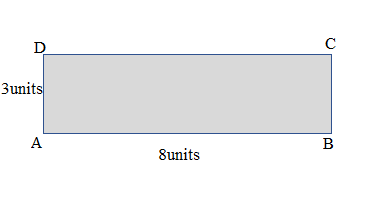

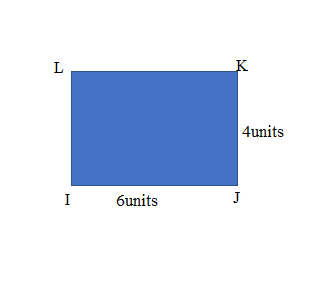
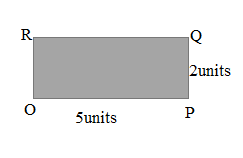
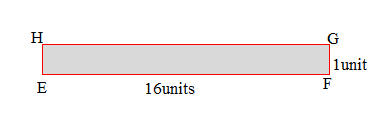
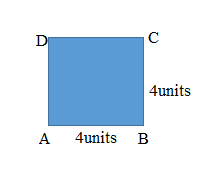


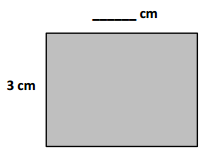

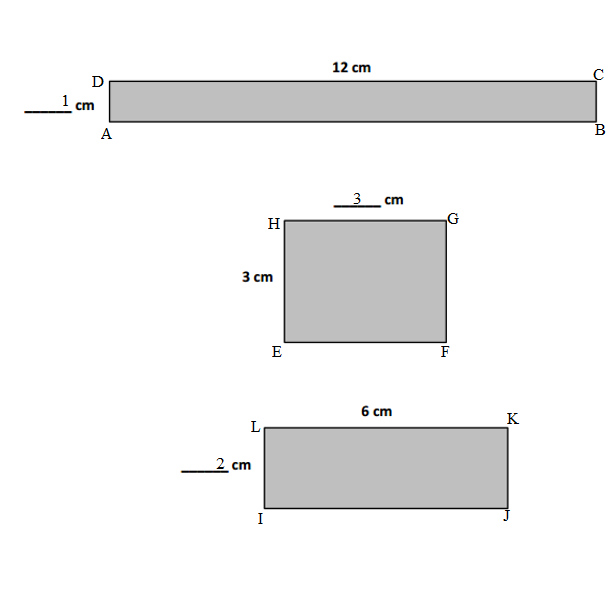

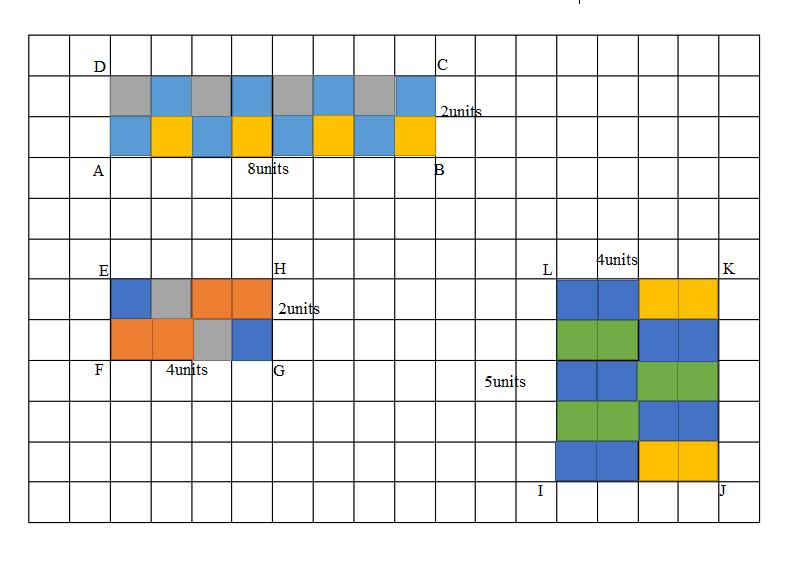
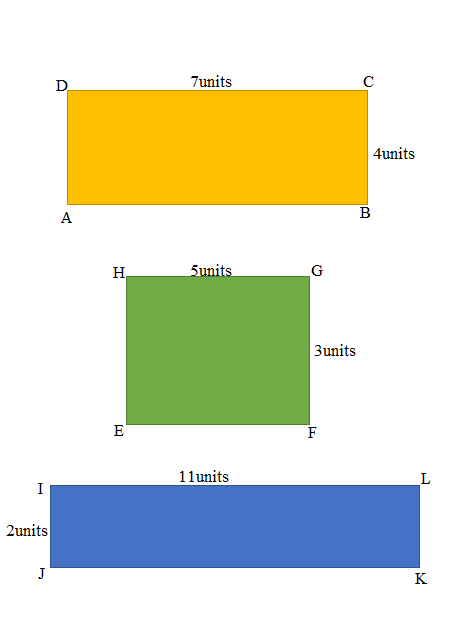

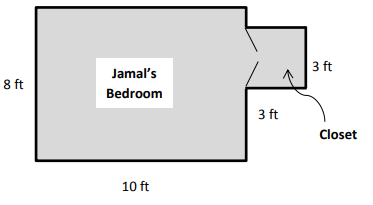

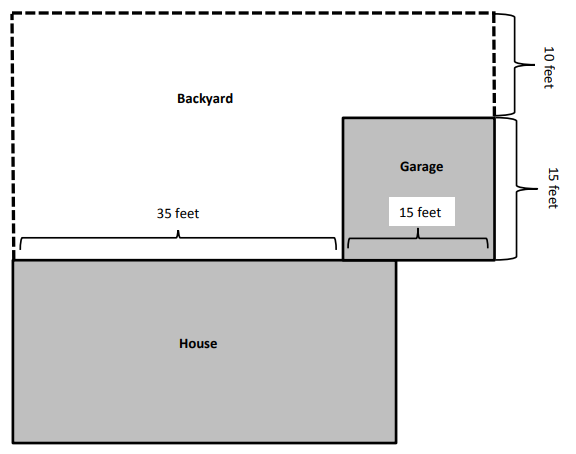
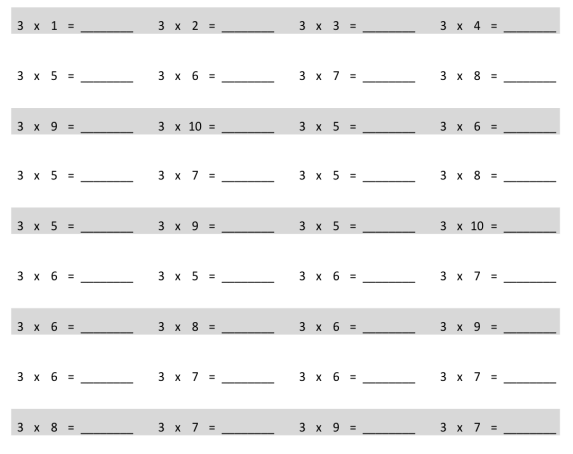
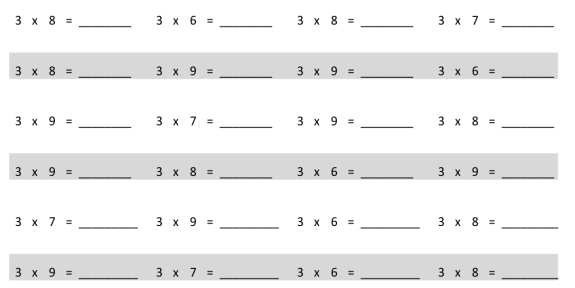
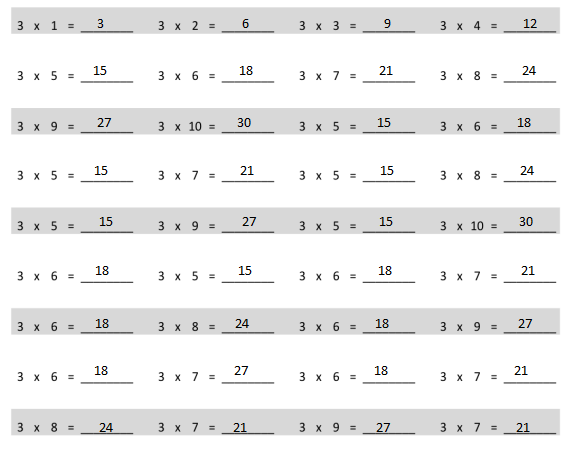
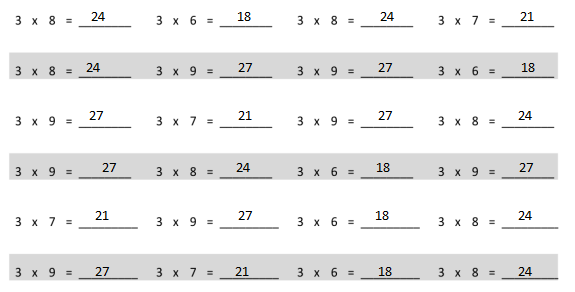


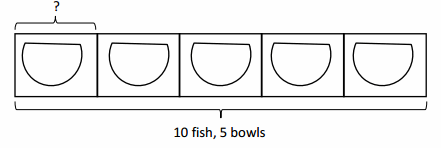
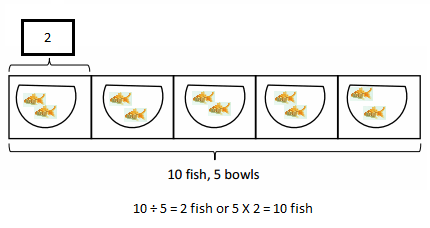
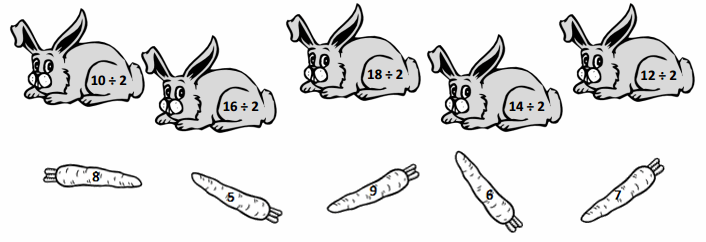
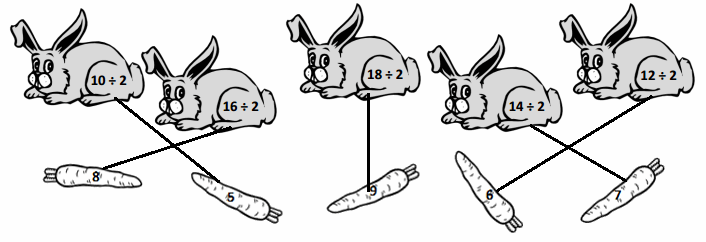 Explanation:
Explanation: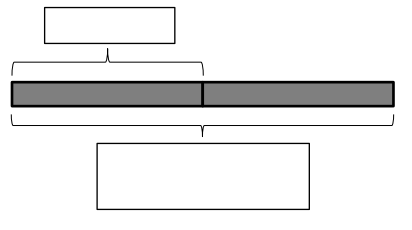

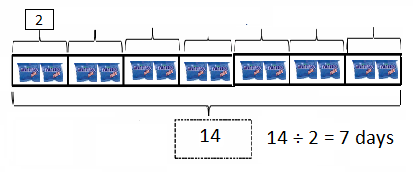


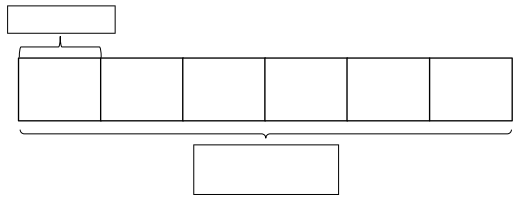
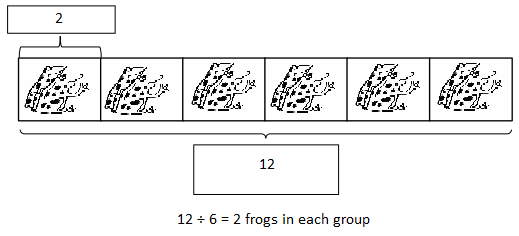

 Explanation:
Explanation:
